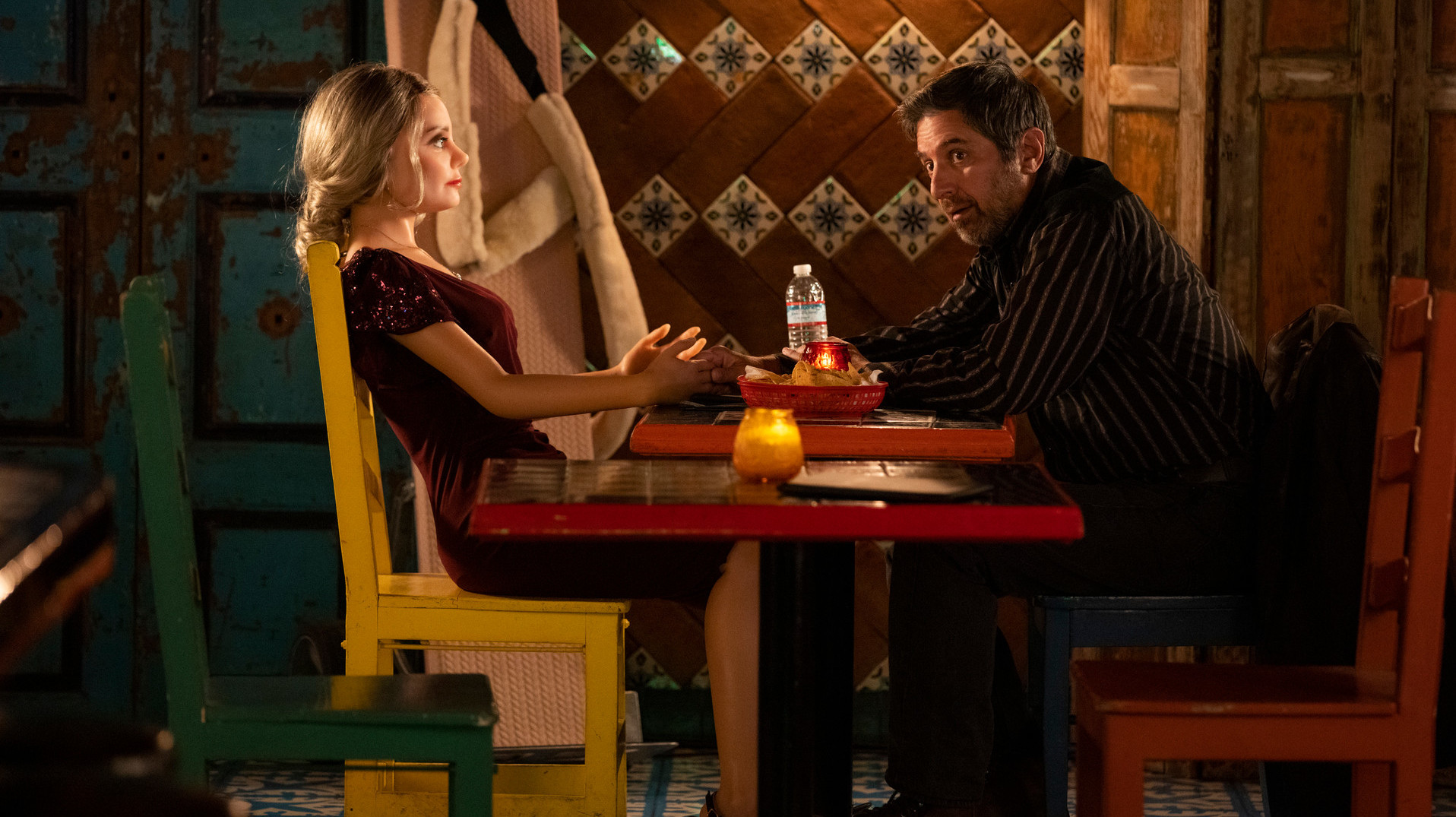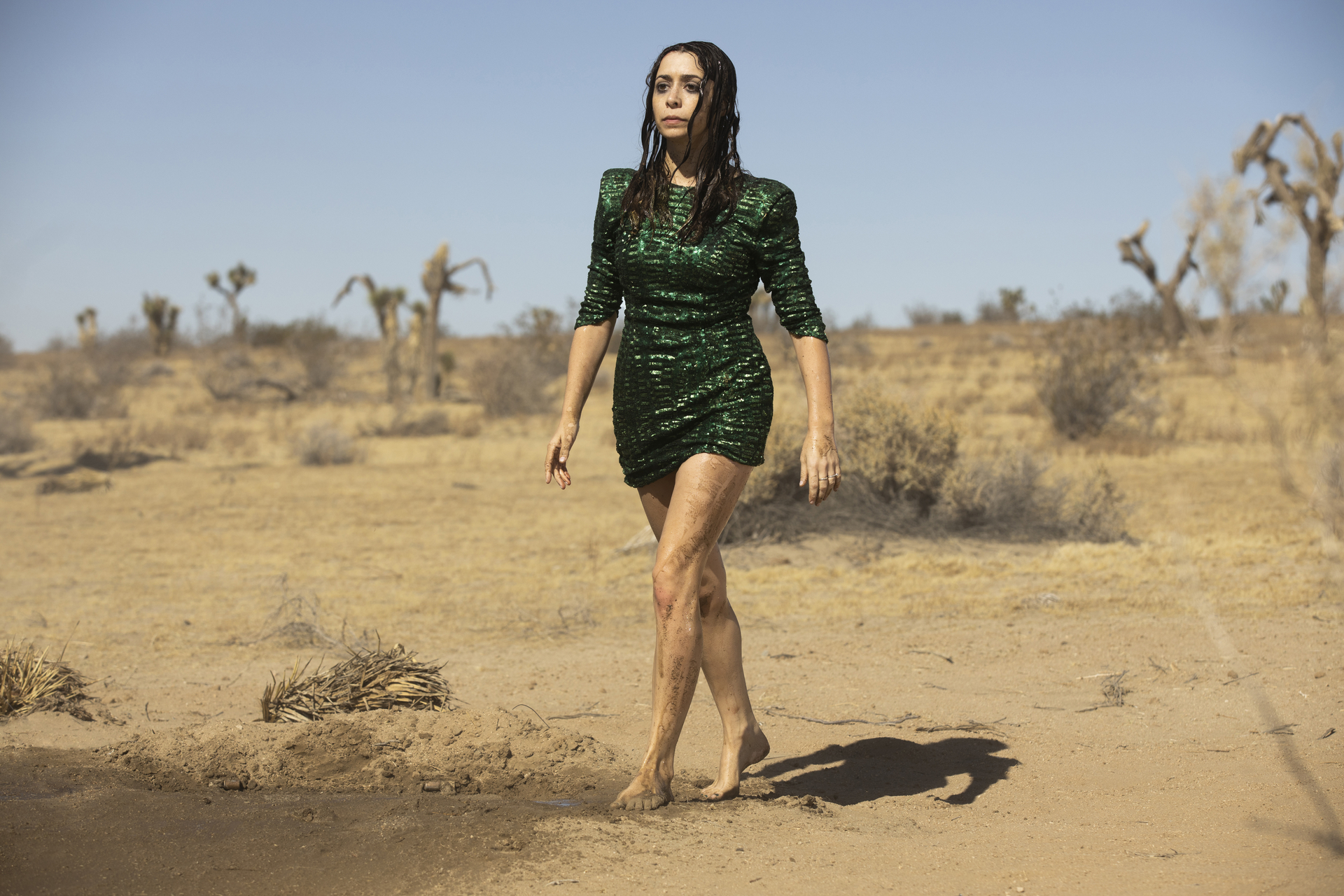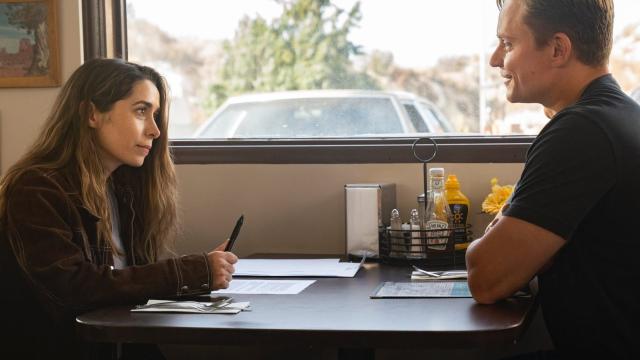Made for Love — about a woman (Cristin Milioti) who escapes from her tech-guru husband (Billy Magnussen) only to discover that he’s implanted a chip in her brain — wrapped up last night with a huge twist and some major unanswered questions. Gizmodo caught up with the creative team to learn more and the chances of a season two.
This interview — with showrunner Christina Lee, creator and writer Alissa Nutting, and director Stephanie Laing — includes a discussion of the final two Made for Love episodes, “I Want to Feel Normal” and “Let’s Meet,” which just aired on April 16. So if you haven’t watched them yet, be warned.

Cheryl Eddy, Gizmodo: Last things first, let’s talk about that finale. Was that the ending you always had in mind?
Christina Lee: Once Alissa and I sort of took the reins for the show, that was the ending that we envisioned. Principally because we wanted to answer the question of these two central relationships in these stories and how they were going to end — the relationships being Hazel (Milioti) and Byron (Magnussen) and Hazel and Herbert (Ray Romano). In her journey of attempting to disconnect from Byron, Hazel ends up reconnecting with her father. That’s a love story there, and she ultimately chooses Herbert over her own freedom. Once we were working with Stephanie, we loved the idea of shooting this almost like a play and having them in one place, in the diner.
Gizmodo: The diner scene is powerful, and it’s also the first time we learn anything about Byron’s background. Why did you decide not to give him any flashbacks or dig into his character any more than you did?
Lee: We dug much deeper into him than you’ll see in the book, and we did that because we wanted to understand him a little bit and have some empathy for the character. But ultimately this is Hazel’s story, so we focused on her. But I think that if we get a season two, his background is a little bit more of what we want to dig into as well.
Alissa Nutting: He also really, thematically, uses privacy and secrecy very much as a weapon, kind of part of a power dynamic that Byron sets up. He knows everything about Hazel, he has constant access to her, and he’s really this closed-off wall. Also, with Byron being a very manipulative and charming character who also keeps us guessing with having these moments of empathy — we don’t really know if he’s telling the truth or not yet. If we get a season two we’ll be able to reveal that.
Gizmodo: Is season two a possibility?
Lee: We’re waiting to find out.

Gizmodo: There’s a lot left to explore! Other than Byron’s background, what would you hope to get into in season two? I would like to see Fiffany (Noma Dumezweni) and Herringbone (Dan Bakkedahl) freed from banishment in the pasture cube! And like what’s in there with them?
Lee: We have some ideas but not full ideas for that yet. [Laughs] I think we want to figure out what does this mean for Hazel, now that she’s back in the Hub. Is this truly a victory for Byron, that she’s back there, or is it not, because he had to use another con to get her back in? I think there’s a lot to explore with their relationship, and obviously, Herbert being in the Hub, that opens up so many possibilities as well.
Gizmodo: The design of the Hub is both intriguing and terrifying. It basically becomes a character in the show after a certain point. What did you base that on and how did you come up with its visual interpretation?
Nutting: Because Byron has all of these high-tech resources at his fingertips, we kind of looked a lot at the culture of tech bros and what sort of designs are used to almost deny or conceal that. The Hub is all about simulation and covering up what’s really there, and the workings behind the curtain. So we looked at spaces that seemed very clean and sleek and minimalist but didn’t have tech that kind of jumps out at you; the tech could seem completely hidden until the moment you used it.

Gizmodo: And the Hub of course contrasts with Twin Sands, Hazel’s hometown, the opposite of a utopia in every way but also the first place she finds freedom in a decade. What were the important elements that you wanted to emphasise with that setting?
Lee: There it’s like everything is so real, you can feel it. I credit so much of that to the way Stephanie shot all of the parts in the desert and in the house, in that you can really feel like you’re there, and it all feels familiar, and it’s messy — but for someone like Hazel, it’s a relief. She’s been living in this simulated, pristine kind of world. So that was really deliberate to have such a stark contrast, and we wanted to show that in all aspects.
Laing: Yeah, we really played with the framing and the lighting for when there’s the Hub world versus when there isn’t, whether it’s with Hazel or with Byron. We really specifically framed and lit in a way that you feel her freedom.
Gizmodo: And smell her freedom, almost, since Byron doesn’t allow smells in the Hub! Kind of to go along with that, Made for Love explores some pretty heavy topics, especially abusive relationships, but it also retains an absurd sense of humour throughout. How did you go about making sure the tone stayed balanced between the two?
Lee: I think when we were writing it came down to the combination of all the things that we love. As avid TV and movie viewers, Alissa and I love comedies, we love thrillers, we basically love it all and we wanted all of it to be in this show. I think with a lot of sci-fi, what we’ve noticed is that there’s a sort of unrelenting darkness to it. That’s where we wanted to take the turn a little bit differently, which mirrors the book, in that despite the disturbing things that are happening, there’s a lightness to it and we always wanted to infuse humour.
Nutting: I would say that we also — with the rare exception, like the small scene with the test tubes — played things very straight. I remember talking to Ray Romano about that, just being like “OK, I think your lines are just supposed to be delivered dramatically.” His performance [as Herbert] is very grounded, and I think that helps with the tone. Obviously, we have these incredible actors to pull that off as well.

Gizmodo: I think Herbert was my favourite character, for a lot of reasons. Would you say he’s really the heart of the show in the end?
Lee: Yeah, I mean, getting Ray Romano, who we were all huge fans of before the show, was an absolute dream. So much of what he brought to the character actually changed the writing of the character of Herbert. Ray brought so much humanity to the character that was originally written as a little bit more rough around the edges. Ultimately what that resulted in was this guy that may not have been the best father and has done things that are questionable, and yet you feel for him, and you truly feel like he’s trying his best, and you also understand that he truly does love his daughter.
Gizmodo: A big theme of the show is “real” vs. “artificial” or “synthetic,” whether it’s Hazel’s environment in the Hub or her relationship with Byron, or even Herb’s relationship with his sex doll, Diane. Why was it important for you to keep emphasising that as the story unfolded?
Nutting: Absolutely. I think one of the questions that the show poses is “When does performance become the real thing?” There’s the whole “fake it ‘till you make it” mentality and I think that what Hazel initially took in marrying Byron the night they met, and going into the relationship. I think so often we pretend in order to feel like our needs are being met, and that’s one of the questions that the show is really in conversation with: what are the times when we’re pretending to have our needs met, whether through simulation or fantasy, or even interacting in a way that isn’t conveying our true, authentic feelings? When does that open up this rift inside us, whether subconsciously or consciously of just knowing, “I am only approximating getting what I need here. What I truly need is something different.”

Gizmodo: Do you think Made for Love is making a positive or negative statement about modern romantic relationships? Or is it a little of both?
Nutting: I think we’re really hoping for a dialogue with viewers and something that can really spark questions. The role of technology — not only in our relationships but in our lives, especially over this last year with covid — is something that we’ve begun relying on more and more and more, and have been doing so out of both convenience and necessity. But the emotional, psychological, and social impacts of that are something that we don’t always have time to even think about throughout the day as we’re using these things and making these pretty radical changes in our lives in terms of technology.
It’s something that we’re definitely hoping sparks some conversation, but also just in terms of relationships — Christina and I, and the Stephanie in the direction really always wanted to have this grounded, emotional thread to the show that really didn’t rely on technology at all. If you’re not being authentic within a relationship, if you don’t know who your partner is, truly, you really can’t be who you really are or have a true love.
Made for Love is now streaming on Stan in Australia.
